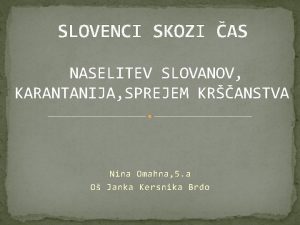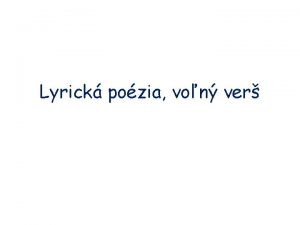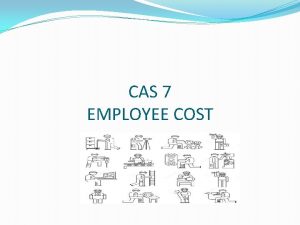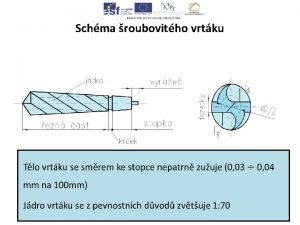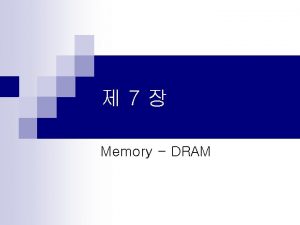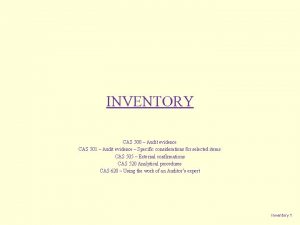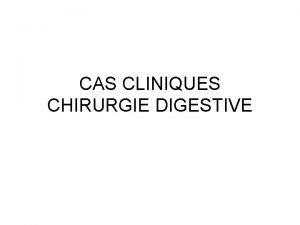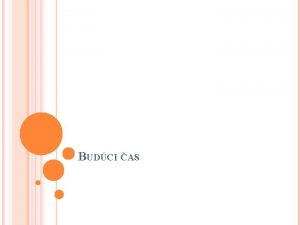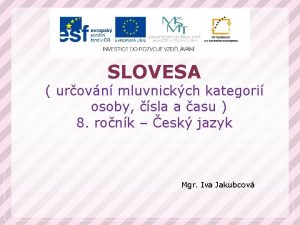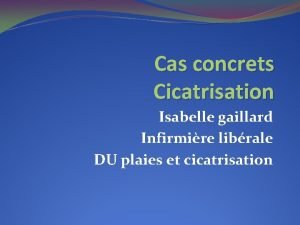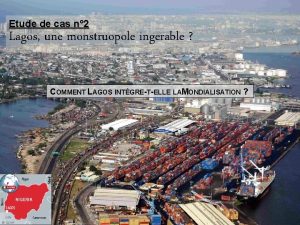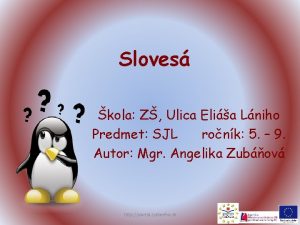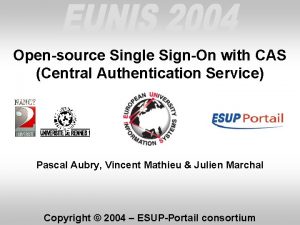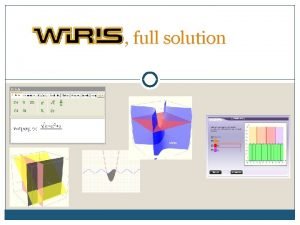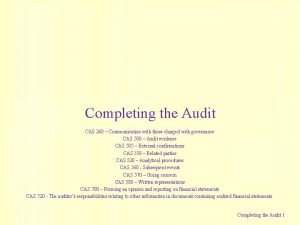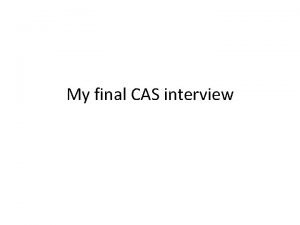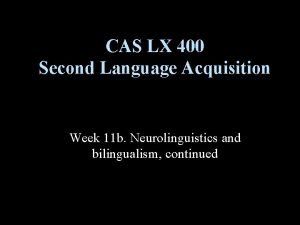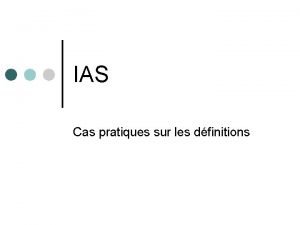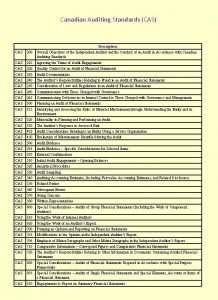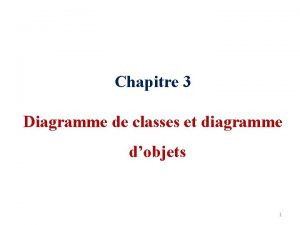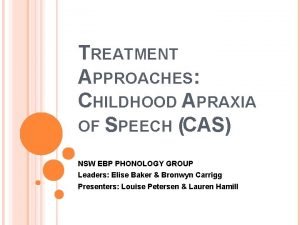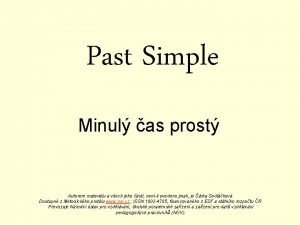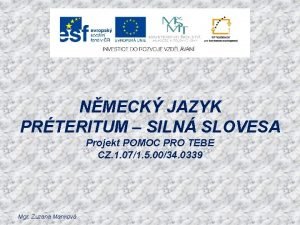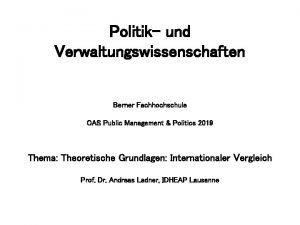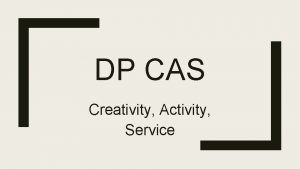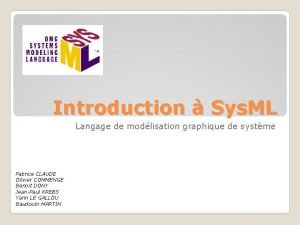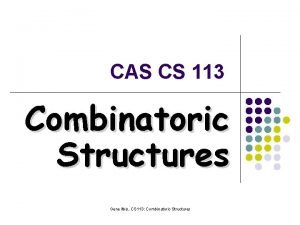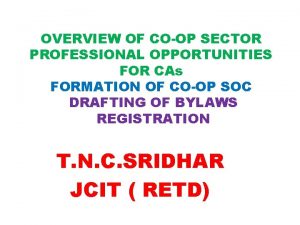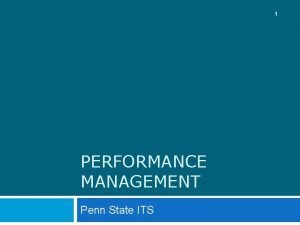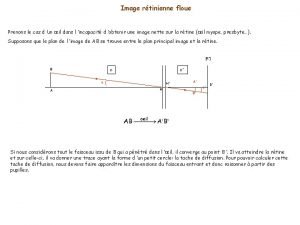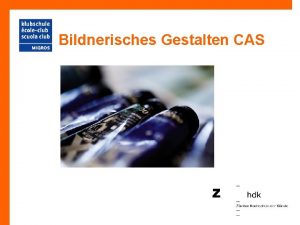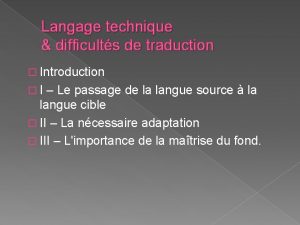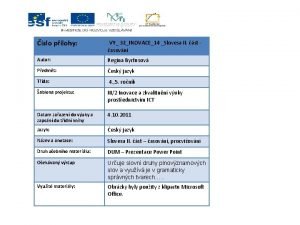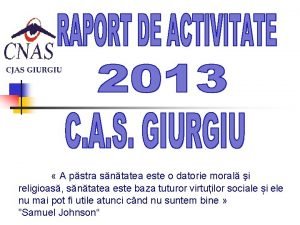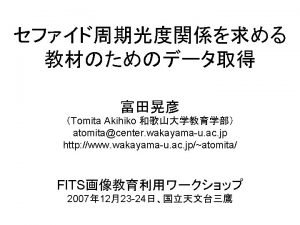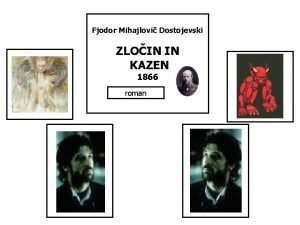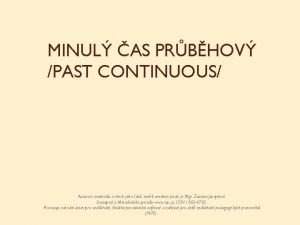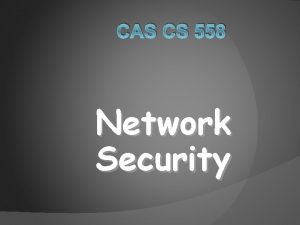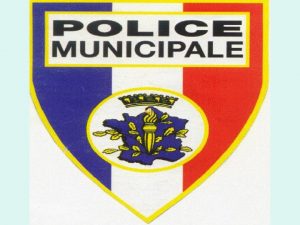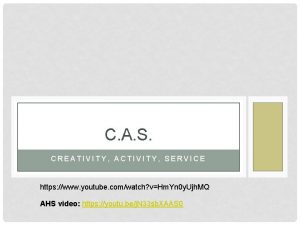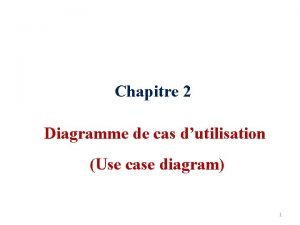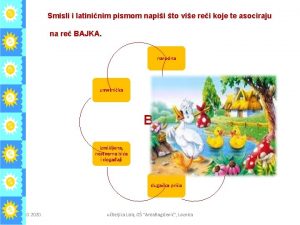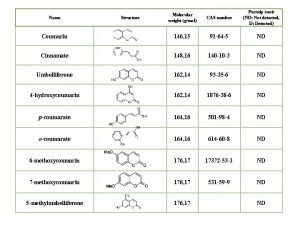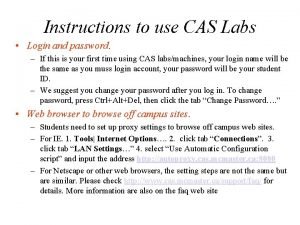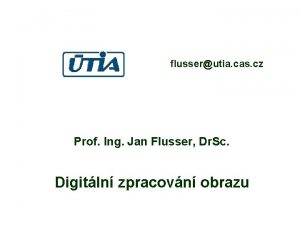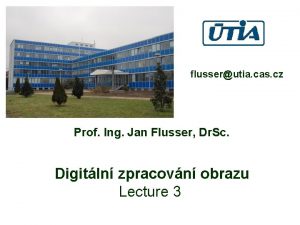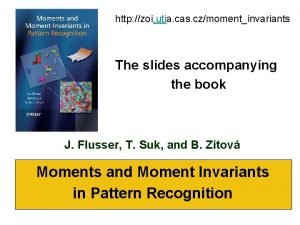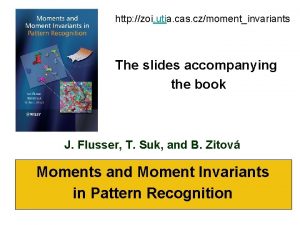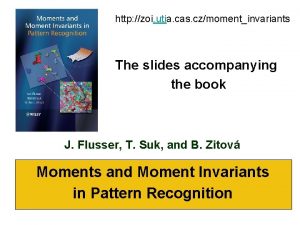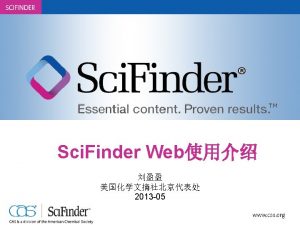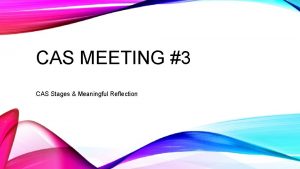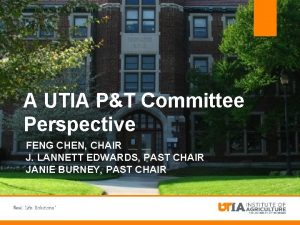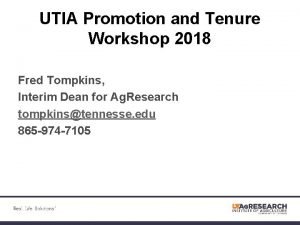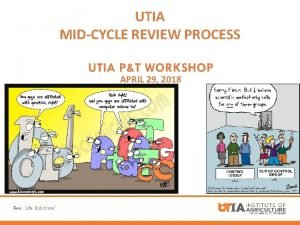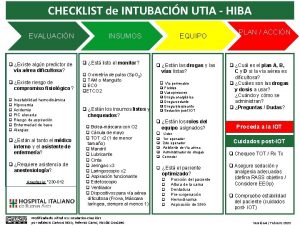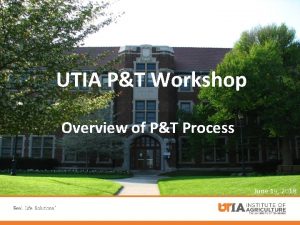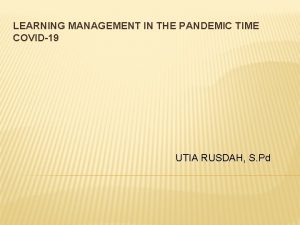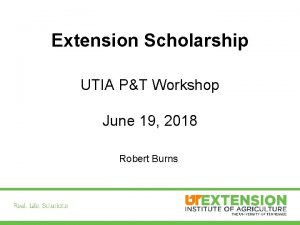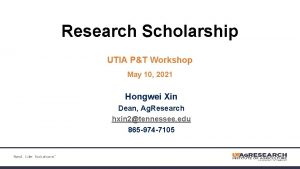flusserutia cas cz www utia cas czpeopleflusser Prof




























































- Slides: 60

flusser@utia. cas. cz www. utia. cas. cz/people/flusser Prof. Ing. Jan Flusser, Dr. Sc. Lecture 4 – Clustering

Unsupervised Classification (Cluster analysis) Training set is not available, No. of classes may not be a priori known

What are clusters? Intuitive meaning - compact, well-separated subsets Formal definition - many attempts, mostly unsatisfactory (t-connectivity, diameter constraint, . . . ) - any partition of the data into disjoint subsets

What are clusters?

How to compare different clusterings? (Ward criterion) Variance measure J should be minimized Drawback – only clusterings with the same N can be compared. Global minimum J = 0 is reached in the degenerated case.

Minimization of J Drawbacks - The results are sometimes “intuitively wrong” because J prefers clusters with approx the same size

An example of a “wrong” result

Drawback – assumes uncorrelated features and “convex” clusters

Solution – proper transform of the features

Clustering techniques • Iterative methods - typically if N is given • Hierarchical methods - typically if N is unknown • Other methods - sequential, graph-based, branch & bound, fuzzy, genetic, model-based, etc.

Sequential clustering • N may be unknown • Very fast but not very good • Each point is considered only once Idea: a new point is either added to an existing cluster or it forms a new cluster. The decision is based on the user-defined distance threshold.

Sequential clustering Drawbacks: - Dependence on the distance threshold - Dependence on the order of data points

Graph-based clustering Idea: Construct a shortest spanning tree and then divide it into clusters by removing some edges. • Naive approach: remove N-1 longest edges • Better: remove N-1 long and inconsistent edges



Iterative clustering methods • N-means clustering • Iterative minimization of J • ISODATA Iterative Self-Organizing DATa Analysis

N-means clustering 1. Select N initial cluster centroids.

N-means clustering 2. Classify every point x according to minimum distance.

N-means clustering 3. Recalculate the cluster centroids.

N-means clustering 4. If the centroids did not change then STOP else GOTO 2.

N-means clustering Drawbacks - The result depends on the initialization. - J is not minimized - The results are sometimes “intuitively wrong”.

N-means clustering – An example Two features, four points, two clusters (N = 2) Different initializations different clusterings

N-means clustering – An example Initial centroids

N-means clustering – An example Initial centroids

Iterative minimization of J 1. Let’s have an initial clustering (by N-means) 2. For every point x do the following: 3. Move x from its current cluster to another cluster, such that the decrease of J is maximized. 4. 3. If all data points do not move, then STOP.

Iterative minimization of J Drawbacks - The algorithm is optimal in each step but in general global minimum of J is not reached.

ISODATA Iterative clustering, N may vary. Sophisticated method, a part of many statistical software systems. Postprocessing after each iteration - Clusters with few elements are cancelled - Clusters with big variance are divided - Other merging and splitting strategies can be implemented

Hierarchical clustering methods • Agglomerative clustering • Divisive clustering

Basic agglomerative clustering 1. Each point = one cluster

Basic agglomerative clustering 1. Each point = one cluster 2. Find two “nearest” or “most similar” clusters and merge them together

Basic agglomerative clustering 1. Each point = one cluster 2. Find two “nearest” or “most similar” clusters and merge them together 3. Repeat 2 until the stop constraint is reached

Basic agglomerative clustering Particular implementations of this method differ from each other by - The STOP constraints - The distance/similarity measures used

Simple between-cluster distance measures d(A, B) = d(m 1, m 2) d(A, B) = min d(a, b) d(A, B) = max d(a, b)

Other between-cluster distance measures d(A, B) = Hausdorf distance H(A, B) d(A, B) = J(AUB) – J(A, B)

Efficient implementation of hierarchical clustering At each level, the distances are calculated using the distances from the previous level. The upgrade is much faster than a complete calculation.

Definite agglomerative clustering Basic algorithm – at a certain level, there may be multiple candidates of merging. Random selection leads to ambiguities. Definite algorithm – all such candidates are merged at that level the number of new clusters emerging at one level may be greater than 1.

Agglomerative clustering – representation by a clustering tree (dendrogram)

Basic divisive clustering 1. All points = one cluster

Basic divisive clustering 1. All points = one cluster 2. Divide the cluster into two parts A, B such that d(A, B) is maximized 3. Select a new cluster to split 4. Apply 2 to the selected cluster 5. Repeat 3 -4 until the stop constraint is reached 6. Full search in Step 2 is very expensive – O(2^n)

Suboptimal Step 2 of divisive clustering 1. Find point p such that the mean of d(p, x) is maximized 2. Divide C into A U B, where B={p} (p is a seed point of a new cluster B) 3. For x from A calculate the mean dist d(x, A) and d(x, B). If d(x, A) > d(x, B) move x into B. 4. Repeat 3 for each x from A.

Suboptimal Step 2 of divisive clustering Alternatively, any iterative algorithm for N=2 can be used (N-means, J - minimization, . . . )

Step 3 of divisive clustering Selecting the next cluster to split - randomly (when performing complete decomposition) - by maximum diameter - by maximum variance - by maximum J

How many clusters are there? 2 or 4 ? Clustering is a very subjective task


How many clusters are there? • Difficult to answer even for humans • “Clustering tendency”, “cluster validity” • Hierarchical methods – N can be estimated from the complete dendrogram • The methods minimizing a cost function – N can be estimated from the “knees” in J-N graph

Life time of the clusters Optimal number of clusters = 4

Optimal number of clusters

Hybrid clustering with the choice of N

Hybrid clustering with the choice of N Iterative Hierarchical merging

Model-based (parametric) clustering Fitting a Gaussian mixture to the data Problem: the number of components


Fuzzy clustering Clusters = Fuzzy sets (Set, Mem. f) Fuzzy C-means

Other clustering criteria Scatter matrices - between cluster matrix - within cluster matrix - total scatter matrix


Other clustering criteria min max

Applications of clustering in image proc. • Segmentation – clustering in color space • Preliminary classification of multispectral images • Clustering in parametric space – RANSAC, image registration and matching Numerous applications are outside image processing area




Thank you ! Any questions ?
 Naselitev slovanov karantanija
Naselitev slovanov karantanija Vitalizmus znaky
Vitalizmus znaky Cas13 in cost accounting
Cas13 in cost accounting Ejektorový vrták
Ejektorový vrták Dram ras cas
Dram ras cas Cas 500
Cas 500 Cas ikea management
Cas ikea management Cas clinique infirmier chirurgie
Cas clinique infirmier chirurgie Budúci čas
Budúci čas Infinitiv
Infinitiv Cas concret infirmier
Cas concret infirmier Cas
Cas Monstruopole
Monstruopole 1. 2. 3. osoba
1. 2. 3. osoba Cas open source
Cas open source Wiris calculator
Wiris calculator Cea.cas700.com
Cea.cas700.com Cas portfolio
Cas portfolio Cas lx 250
Cas lx 250 Ias cas
Ias cas Cas200
Cas200 Diagramme de classe definition
Diagramme de classe definition Cas treatment approaches
Cas treatment approaches Grab in past simple
Grab in past simple Fliegen minulý čas
Fliegen minulý čas Cas politik
Cas politik Cas mpips
Cas mpips Chmsib
Chmsib Diagramme de bloc interne
Diagramme de bloc interne Ipard cas
Ipard cas Cas cs
Cas cs Intel cache acceleration software
Intel cache acceleration software Cas coop
Cas coop Penn state jrw
Penn state jrw Controlagro cas 4500 manual
Controlagro cas 4500 manual Prenons le cas
Prenons le cas Cas bildnerisches gestalten
Cas bildnerisches gestalten Nacada core values
Nacada core values Cas juridique
Cas juridique Mammographie
Mammographie Improving web application security
Improving web application security Bpp university
Bpp university Cas u sloves
Cas u sloves Cnas giurgiu
Cnas giurgiu Croquis londres 1ere
Croquis londres 1ere Cas su
Cas su Cas orbitopatia tiroidea
Cas orbitopatia tiroidea Zloin
Zloin Chris luckhurst
Chris luckhurst Read minulý čas
Read minulý čas Cas cs 235
Cas cs 235 Cas juridique
Cas juridique Cas activity examples
Cas activity examples Diagramme de cas d'utilisation acteur secondaire
Diagramme de cas d'utilisation acteur secondaire Kneginja na zrnu graska priprema za cas
Kneginja na zrnu graska priprema za cas Teach minulý čas
Teach minulý čas Parnip cas
Parnip cas Cas concret asg
Cas concret asg Cas clinique neurologie
Cas clinique neurologie Cas clinique insuffisance cardiaque
Cas clinique insuffisance cardiaque Caslabs
Caslabs
